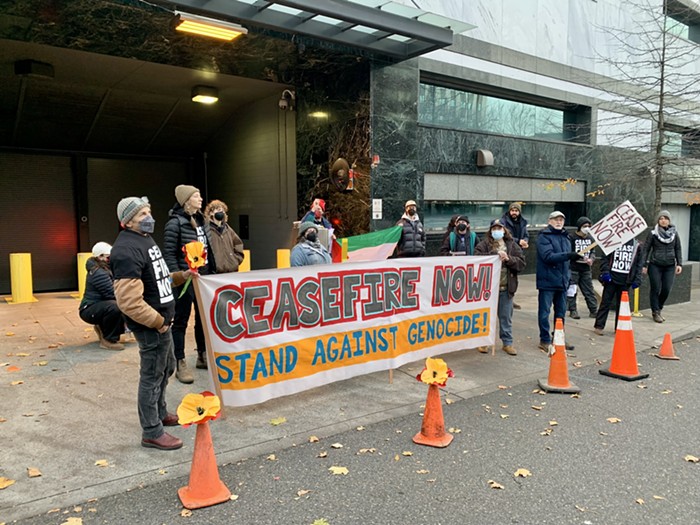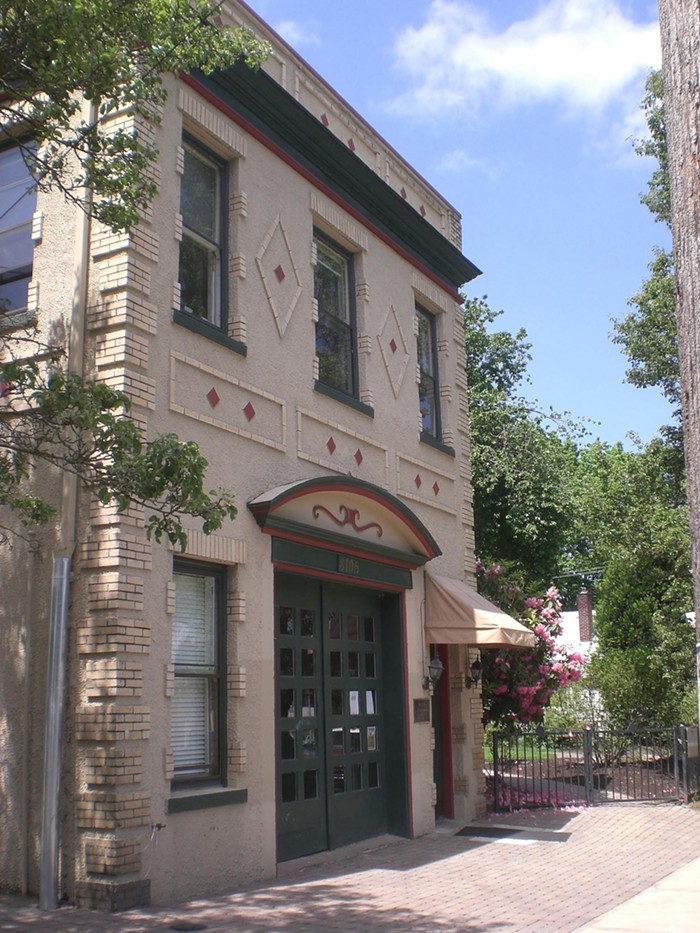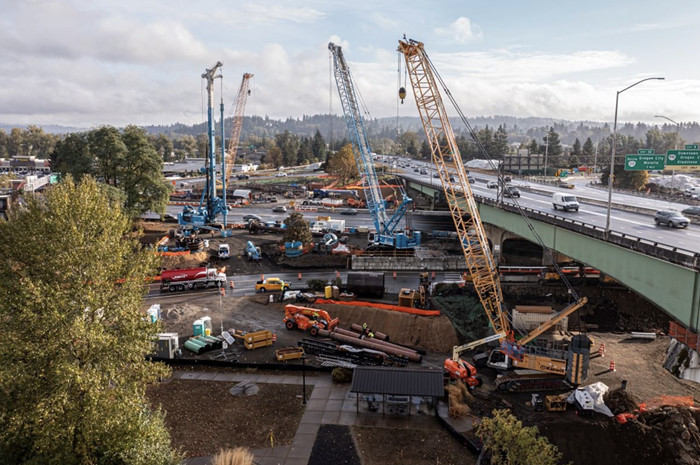HONESTLY, it's a miracle this clattering, smoking contraption of a city even keeps rolling.
Road paving gets most of the headlines these days—and the city's neglected roadways may well spur a new business and income tax very, very soon. But if you really want to know how bad things are, wave around a few million in fresh cash.
That's what the city council is doing right now, as part of its semiannual "budget monitoring process" ("bump" for short). It turns out Portland's got $10.1 million in unexpected money to play with. And since, according to city budget policy, at least 25 percent of that money must be spent on maintenance projects, city bureaus have wasted no time suggesting where it might do some good.
Dozens of grim specters have emerged: bridges threatening to crumble onto the interstate; problematic fueling stations for city vehicles that have the Oregon Department of Environmental Quality issuing fines; rain-threatened 911 dispatchers; and community centers lacking heat.
It's not new for bureaus to play up their woes in pursuit of money, of course. What is new, in regards to this "bump," is that city commissioners have something more solid than the bureaus' assurances to go on.
This summer, the Portland City Budget Office (CBO) convened staffers from eight bureaus to vet proposals for any surplus cash. Using a risk score drawn up by the CBO, the group ranked 35 projects seeking a combined $46.6 million.
The scores tabulate the threat of not completing a project (lives lost, for instance), the potential boons of doing the work (factors like improved safety and money saved), and the risk a given piece of infrastructure will "fail." The scores also offer as good of a picture as the city has of its most urgent maintenance priorities (with the caveat that the city's utility-rate-funded sewer and water bureaus didn't apply).
And even though Mayor Charlie Hales has very vocally prioritized paving—pushing maintenance for 100 miles of roadways in his last budget—those needs don't even crack the top half of the new rankings.
The most highly ranked paving project in the list—a stretch of SW Naito—ranks just 18th, with five others not far behind. Even among the Portland Bureau of Transportation's (PBOT) maintenance wish list, repaving projects take a backseat to six other more pressing causes—four bridges, one shoddy retaining wall, and a handful of decrepit traffic signals.
"There's a good case to be made for these priorities," says PBOT spokesman Dylan Rivera, asked about the discrepancy between the rankings and his bureau's focus on paving. "I don't think anyone would dispute that."
Rivera notes, though, that the current emphasis on routine maintenance was bolstered by surveys. Portlanders want smoother roads, he says.
"What this says is that PBOT has a real variety of assets that touch the public every day in a lot of different ways."
But the rankings also offer an interesting counterpoint to at least one request for the surplus money.
Transportation Commissioner Steve Novick has asked for $4.5 million for paving that would come on top of the money the city is required to spend on maintenance. Novick would spend that extra cash on "back-to-basics maintenance," a nod to businesses who accuse the city of scheming up a new tax without putting up existing money. (Novick's office deferred questions about the rankings to Rivera.)
The CBO, meanwhile, has recommended the council shoot Novick down, but not before offering its support for new transportation money: "The need to address [PBOT's] maintenance backlog is real, and it is widely accepted that the bureau lacks sufficient resources to address the problem."
This newfound $10.1 million will be carved up sooner than later. With city council scheduled to take up the ranked projects on November 4, here are the top five maintenance projects imperiling Portlanders:

1. An unfit gasoline container near the Columbia Slough
Cost: $2,132,904
Risk Score: 34 out of 50
City-owned vehicles guzzle about $7 million in gas every year, drawing on nine fueling sites throughout the city. But more than half of the 27 fueling tanks spread among those stations have outlived their use, says the Portland Office of Management and Finance (OMF). Particularly problematic: a tank near the wastewater treatment center at 5001 N Columbia. It's almost 40 years old and might not be fit to handle the modern ethanol the city uses.
The site "has already received a DEQ citation and fine for failure to comply with performance standards," says the OMF's description.
"The tank has to be decommissioned, or they will continue to fine," says OMF spokeswoman Jen Clodius, who notes the vessel isn't leaking.

2. The NE 12th bridge over Interstate 84 isn't the stoutest
Cost: $9,736,909
Risk Score: 33 out of 50
You know this bread-scented bridge just north of the Franz Bakery. It "was built in 1910, and currently stands at 104 years old!" PBOT yells in its description.
Then PBOT details why you shouldn't be lulled into false comfort by the smell of gluten as you cross: "The bridge is classified by the federal NBI [National Bridge Inventory] as Functionally Obsolete. It is also Fracture Critical. That means that if any one member of the bridge's trusses or girders should fail, then the whole bridge structure could collapse. This is obviously a significant hazard over I-84 and railroad tracks below."
The span, PBOT notes, "is also a significant earthquake hazard." (This is a common refrain in the push for funds.)
Rivera, PBOT's spokesman, insists the bridge isn't in any heightened danger of falling—it has been "fracture critical" since it opened, by virtue of its structure. But the bridge's supports are also unsettlingly close to I-84 traffic and train tracks, meaning an accident or derailment could imperil the span.
"The bridge can serve the public as long as no one damages those supports," Rivera says.

3. A disguised bridge on N Willamette that could slide down the hillside
Cost: $532,751
RISK Score: 31 out of 50
This bridge sits precariously over Swan Island, on a curving stretch of N Willamette overlooking Portland's industrial splendor. It might be difficult to find on your own. According to PBOT's description: "the bridge does not appear to be obvious at the site, as the bridge overhangs the Willamette Bluff hillside. However this hillsdie [SIC!] has been known to have landslide activity over the years, which poses a concern for the stability of the bridge and the stability for Willamette Blvd."
PBOT wants to replace the bridge with something stronger and more stable, it says.

4. The porous roof over the emergency dispatch system
Cost: $2,976,910 (with all but $500,000 requested this fall)
Risk Score: 31 out of 50
Portland's Bureau of Emergency Communications (BOEC) is vital if you want convenient things like police and ambulance service when you dial 911. But the bureau's East Portland communication center has sprung several leaks, and its roof and walls could use replacing.
As BOEC makes clear in its description, your own life could be in danger: "If water leaks damage technology infrastructure in the building, multiple fatalities could result, and emergency response could be affected. Any possible disruption in service is disruption to an essential service to customers. The city is legally obligated to provide the essential services conducted" in the dispatch center "and is liable for disruptions in service that may occur."

5. A shoddily made retaining wall on SW Broadway
Price: $300,000
Risk Score: 29.7 out of 50
Take Broadway as it snakes south from downtown, and you'll pass a retaining wall leaning out precariously from its intended position. That's a problem, since the wall supports both the roadway and a water main that serves nearby homes. The barricade, PBOT says, is the poorest specimen in its "wall inventory." What's more, the bureau doesn't seem to have any idea why it was constructed like it is, or precisely when (it speculates the wall is "in excess of 50 to 60 years old").
"It was built using broken chunks of concrete sidewalk, which is absolutely not a recommended type of retaining wall," the bureau wrote. "The wall is in significant danger of failing, and is already significantly leaning forward away from plumb."



















